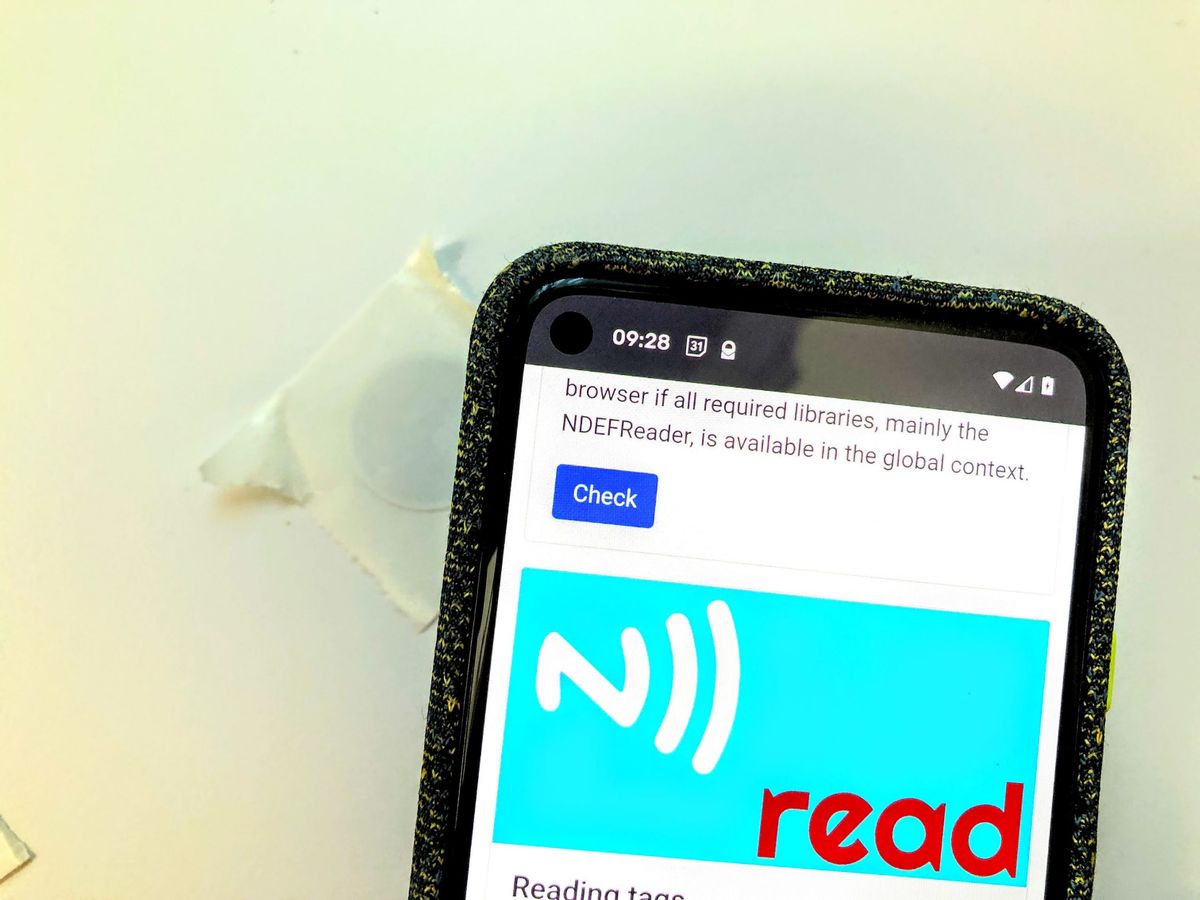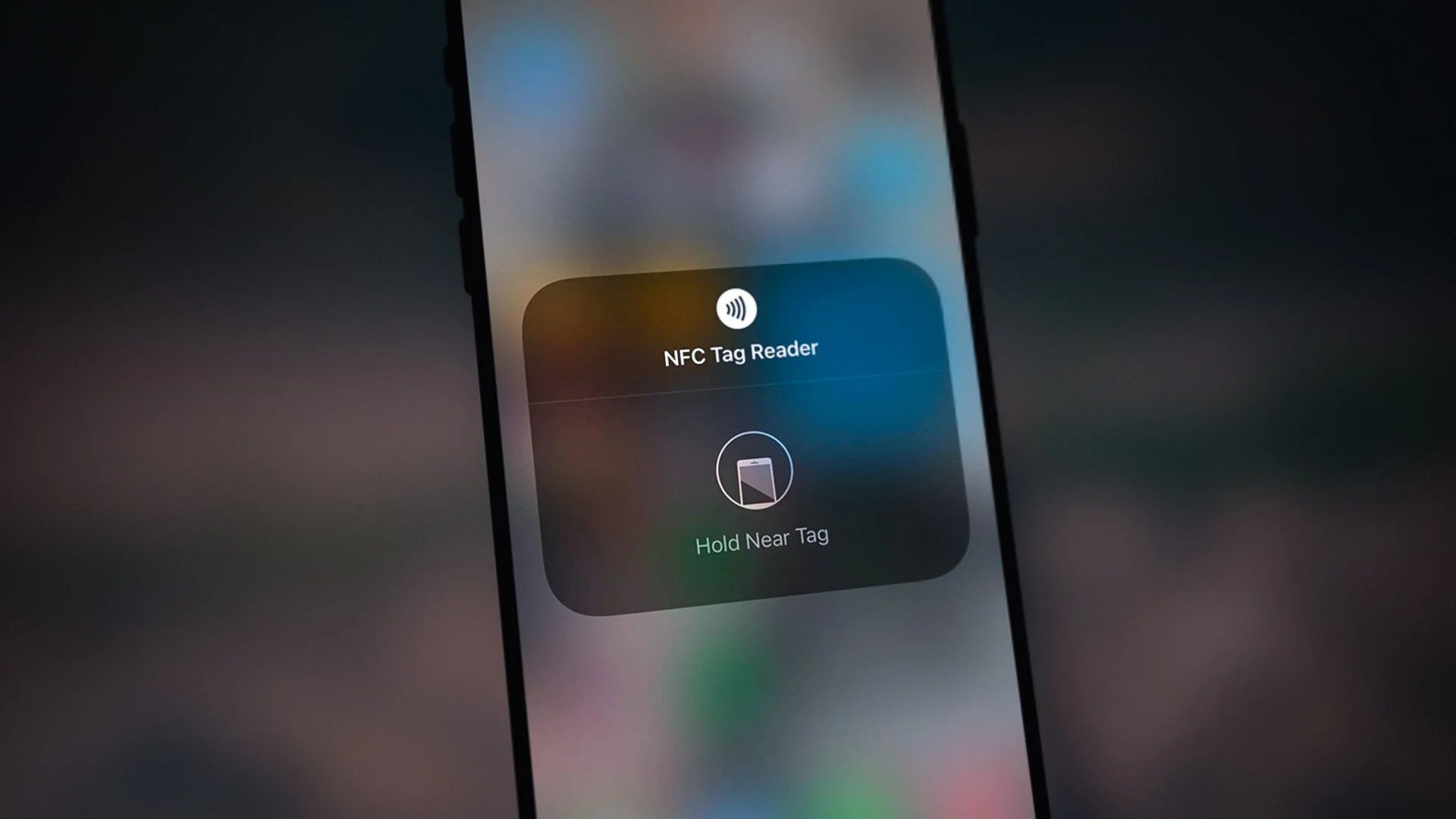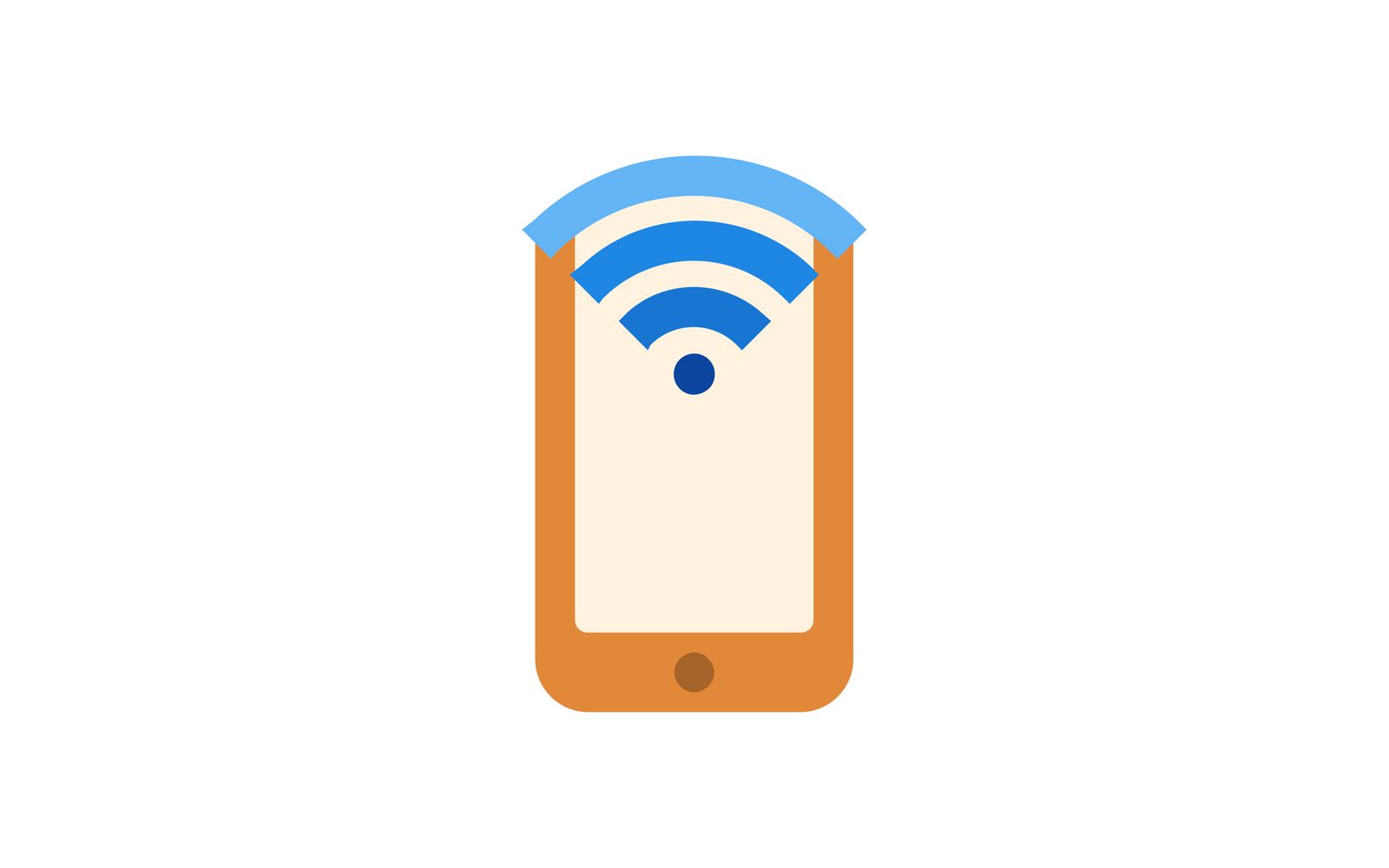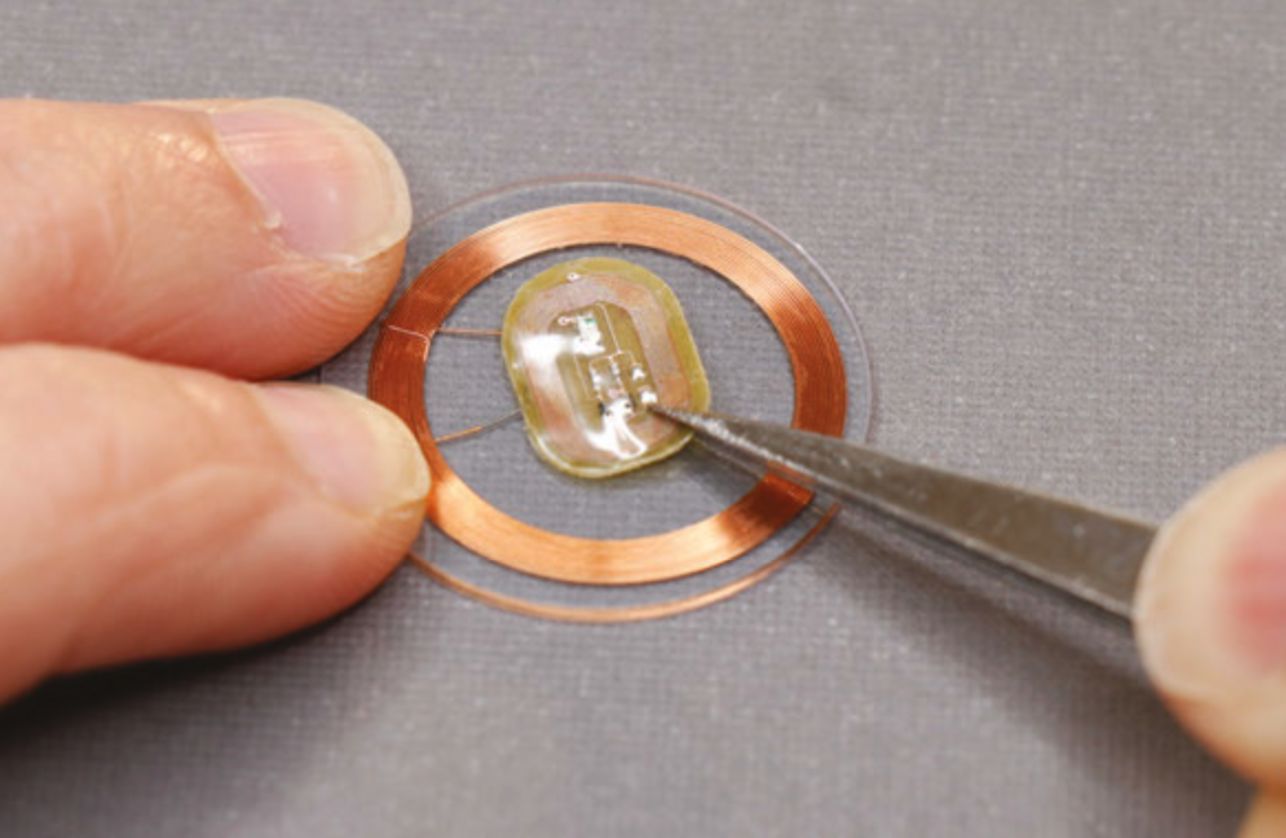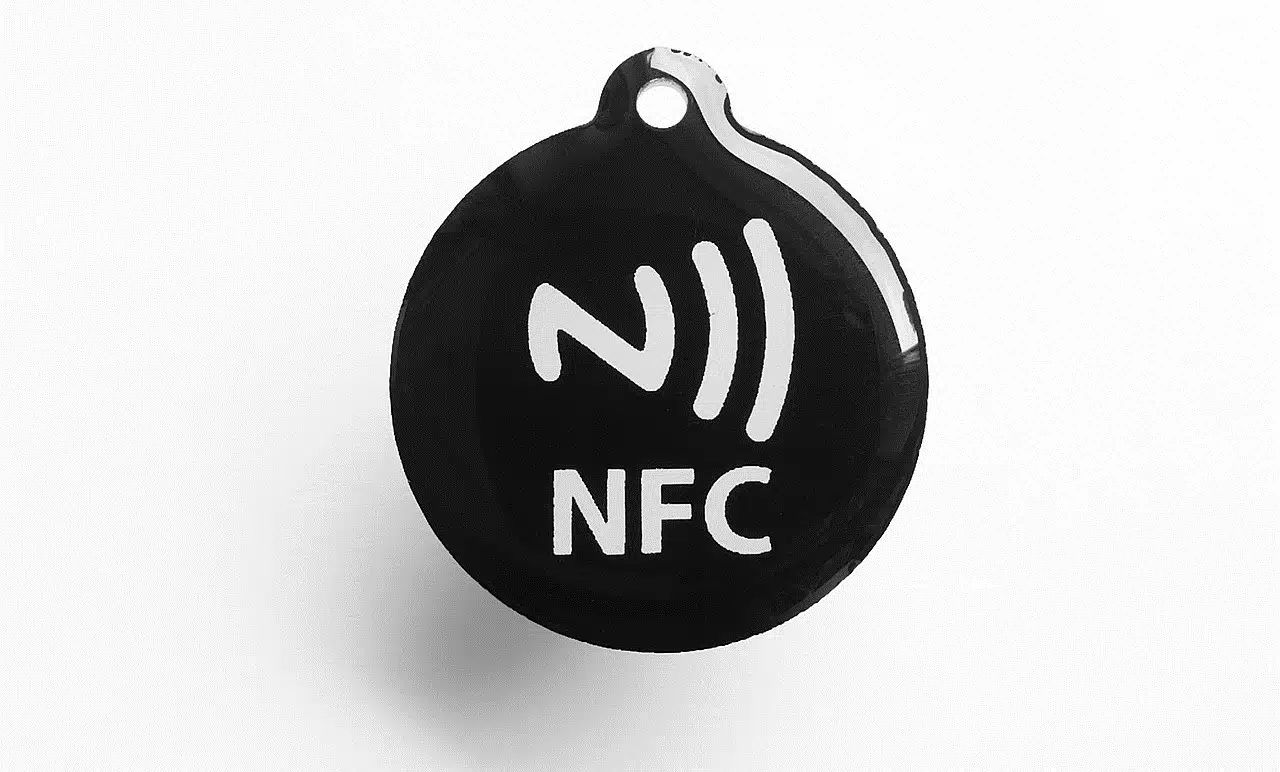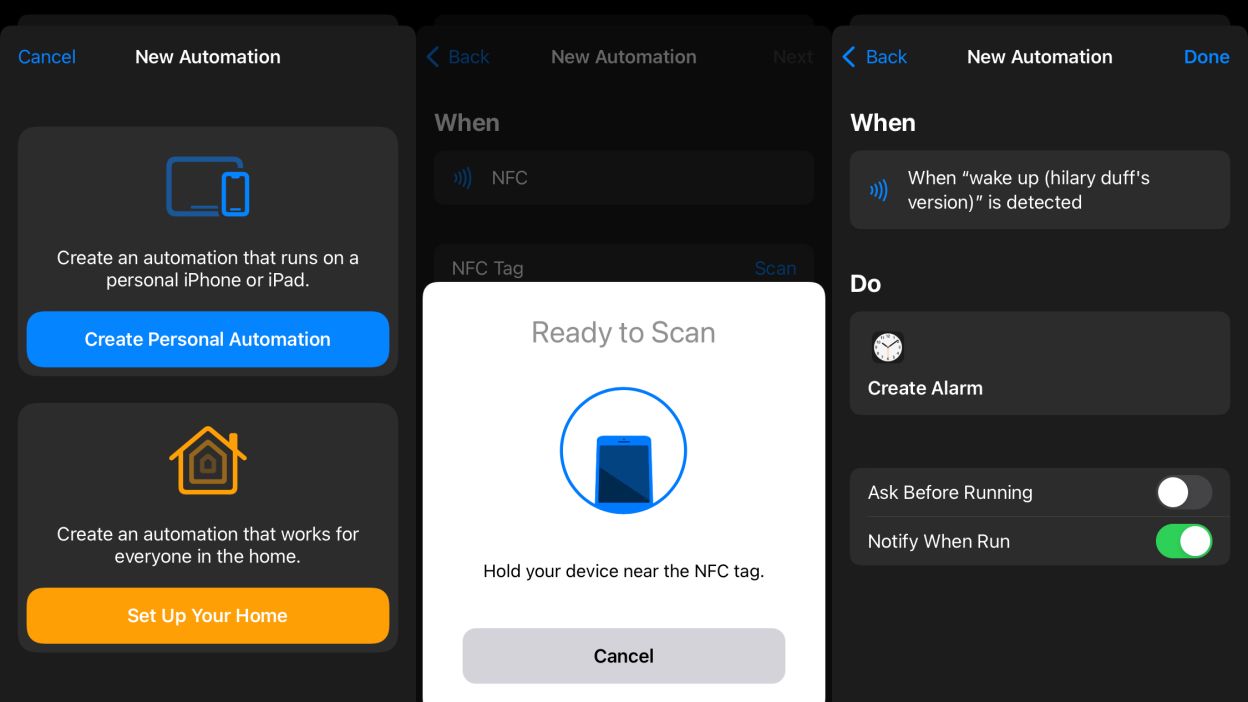Introduction
Welcome to the world of NFC (Near Field Communication) tags! In this article, we will explore the fascinating technology behind NFC tags and their numerous applications in our day-to-day lives. NFC has gained significant popularity as it provides a convenient and secure way to transmit data wirelessly between devices.
But what exactly is NFC? NFC is a short-range wireless communication technology that allows the exchange of information between two devices in close proximity. It is based on radio frequency identification (RFID) technology and operates at a frequency of 13.56 MHz. NFC tags are small, thin adhesive stickers or chips that can be attached to objects or embedded within them. These tags store and transmit data when they come into contact with an NFC-enabled device, such as a smartphone or tablet.
The functionality of NFC tags is what makes them truly remarkable. When an NFC-enabled device comes close to a tag, a connection is established, and information is exchanged. NFC tags can hold a wide range of data, including URLs, contact information, text messages, and more. This makes them incredibly versatile and applicable in various scenarios.
There are different types of NFC tags available in the market, each with its own characteristics and capabilities. Some tags are read-only, meaning they can only be read by NFC-enabled devices, while others are rewritable, allowing users to update the information stored on them. Additionally, NFC tags come in various forms, such as stickers, keyfobs, or inlays, making them suitable for different use cases and environments.
The applications of NFC tags are expanding rapidly across different industries. They are commonly used in the retail sector for mobile payments, allowing customers to make purchases by simply tapping their NFC-enabled devices on payment terminals. NFC tags are also utilized for access control in buildings, where employees can enter secure areas by scanning their smartphones against NFC readers.
Another prominent use of NFC tags is in the field of marketing. Businesses can place NFC tags on advertising materials, such as posters or flyers, to provide customers with instant access to promotional content or discount codes. This not only simplifies the customer experience but also enables businesses to gather valuable data and track the effectiveness of their marketing campaigns.
Using NFC tags comes with numerous benefits. They offer a contactless and efficient means of data transfer, eliminating the need for physical contact or manual input. NFC tags are also highly secure, as the close proximity required for communication makes it difficult for unauthorized parties to intercept or tamper with the transmitted data. Additionally, NFC technology is widely supported by most modern smartphones, making it accessible to a large user base.
In the next section, we will delve deeper into the workings of NFC tags, exploring their types and functions. So, stay tuned to discover the incredible possibilities that NFC tags have to offer!
What is NFC?
NFC (Near Field Communication) is a wireless communication technology that enables the exchange of data between devices in close proximity. It operates at a frequency of 13.56 MHz and is based on RFID (Radio Frequency Identification) technology.
NFC allows devices to communicate by simply being in close proximity or making physical contact, typically within a range of a few centimeters. This close range ensures secure and reliable data transmission, making NFC a widely used technology in various applications.
NFC technology is integrated into many modern smartphones, tablets, and other devices, making it easily accessible to millions of users worldwide. It can also be found in other devices, such as payment terminals, access control systems, and public transportation cards.
One of the primary uses of NFC technology is for contactless payments. With the tap of an NFC-enabled smartphone or credit card on a payment terminal, users can make purchases without the need for physical cash or swiping a card. NFC offers a convenient and secure way to perform transactions, with built-in encryption and authentication protocols ensuring the safety of sensitive payment information.
In addition to mobile payments, NFC has other practical applications. For example, NFC tags can be used for product authentication. By embedding NFC tags within products or packaging, manufacturers can verify the authenticity of their products, helping to combat counterfeit goods and protect consumers.
NFC tags are also commonly used in access control systems. Instead of keycards or traditional keys, employees can use their NFC-enabled smartphones or badges to gain access to secure areas in office buildings or other facilities. This provides a more convenient and secure solution, as lost or stolen cards can easily be deactivated or replaced.
Furthermore, NFC technology has found its way into the realm of marketing and advertising. NFC tags can be incorporated into marketing materials, such as posters, flyers, or product packaging, to provide users with additional information or promotional content. By tapping their NFC-enabled devices on the tags, users can instantly access websites, videos, or special offers, enhancing the interactive and engaging nature of marketing campaigns.
Overall, NFC technology offers a range of benefits, including convenience, security, and versatility. Its ability to enable contactless communication and facilitate various applications makes it an increasingly important and prevalent technology in our modern world.
How do NFC tags work?
NFC (Near Field Communication) tags utilize electromagnetic induction to facilitate communication between devices. NFC tags contain a small chip and an antenna, which work together to store and transmit data. When an NFC-enabled device comes into close proximity with a tag, the two devices establish a connection and exchange information.
There are two main modes of operation in NFC: read/write mode and card emulation mode. In read/write mode, an NFC-enabled device can read the data stored on an NFC tag and write new data to it. This mode is commonly used for applications like contactless payment and information sharing.
When an NFC-enabled device approaches an NFC tag, an electromagnetic field is generated by the device’s NFC antenna. The NFC tag’s antenna picks up this electromagnetic field and converts it into electrical energy. The tag then uses this energy to power its chip and start communicating with the device.
During communication, the NFC-enabled device acts as an active device, also known as the initiator or reader, while the NFC tag acts as a passive device, or the target or tag. The reader sends out a signal containing specific commands to the tag, and the tag responds accordingly.
The data transmission between the reader and the tag occurs through modulation of the electromagnetic field. The reader alternates the field strength, and the tag interprets these changes to transmit its data back to the reader. This is known as load modulation.
NFC tags can store various types of data, such as URLs, contact information, or text messages. The data is stored in different memory sections of the tag’s chip, depending on the tag type and its capacity. NFC tags can be either read-only, meaning the data stored on them cannot be changed, or rewritable, allowing users to update the information as needed.
In addition to the read/write mode, NFC tags can also operate in card emulation mode. In this mode, the NFC-enabled device behaves like an NFC tag, allowing it to emulate contactless smart cards or other types of NFC tags. This mode is commonly used for applications like mobile ticketing or access control systems, where the device is used as a virtual card.
Overall, NFC tags use a combination of electromagnetic induction, data modulation, and communication protocols to enable seamless and secure data transfer between devices. Their versatility and ease of use make them a valuable tool in various industries and applications.
Types of NFC tags
NFC (Near Field Communication) tags come in various types, each with its own characteristics and capabilities. Understanding the different types of NFC tags can help you choose the most suitable one for your specific application. Here are some common types of NFC tags:
1. NFC Stickers: These are the most basic and commonly used type of NFC tags. They are thin adhesive stickers that can be attached to various surfaces, such as posters, products, or packaging. NFC stickers have a small NFC chip embedded within them, along with an antenna for communication.
2. NFC Keyfobs: Keyfobs are small and convenient NFC tags designed to be attached to keychains or lanyards. They are commonly used in access control systems, where users can tap their keyfob on an NFC reader for authentication purposes.
3. NFC Cards: NFC cards are similar in size and shape to traditional plastic cards, like credit cards or ID cards. They have an embedded NFC chip and antenna, allowing them to be used for various applications, including payment systems, ticketing, and identification.
4. NFC Wristbands: NFC wristbands are wearable NFC tags designed to be worn as bracelets or bands. They offer a convenient and secure way to access events, concerts, or amusement parks, as users can simply tap their wristbands on NFC readers to gain entry.
5. NFC Inlays: NFC inlays are small, flexible adhesive tags that can be embedded within products or packaging. They are often used for product authentication, inventory tracking, or data collection purposes. NFC inlays can be easily integrated into existing products without significantly altering their appearance.
6. NFC Tokens: NFC tokens are small, coin-shaped NFC tags that can be used for loyalty programs, access control, or gaming applications. They are compact and durable, making them suitable for applications where extended use or rugged conditions are expected.
7. NFC Labels: NFC labels are NFC tags that are embedded in paper or plastic labels. They are commonly used for inventory management, asset tracking, or labeling applications where NFC technology is employed to enhance efficiency and accuracy.
Each type of NFC tag has its own storage capacity, read/write capabilities, and form factor. It’s important to consider these factors along with your specific requirements when choosing the right NFC tag for your application.
It’s worth noting that NFC tags are available in different memory sizes, ranging from a few kilobytes to several megabytes. The memory capacity determines the amount of data that can be stored on the tag. Some tags are read-only, meaning the data cannot be modified once it is stored, while others are rewritable, allowing for flexibility in updating or modifying the stored information.
Understanding the variety of NFC tag options available will empower you to select the most suitable tag for your intended use, ensuring optimal performance and functionality.
Common uses of NFC tags
NFC (Near Field Communication) tags have a wide range of practical applications across various industries. Their small size, versatility, and ease of use make them an ideal solution for many use cases. Here are some common uses of NFC tags:
1. Mobile Payments: One of the most prominent uses of NFC tags is for mobile payments. By leveraging NFC technology, users can make secure and convenient contactless payments by simply tapping their NFC-enabled devices, such as smartphones or smartwatches, on payment terminals. NFC tags enable a seamless transaction process, eliminating the need for physical cash or credit cards.
2. Access Control: NFC tags are widely used for access control in buildings, offices, or gated communities. Users can use their NFC-enabled devices or NFC cards to gain entry by tapping them on NFC readers. This provides a convenient and secure solution, as access credentials can be easily managed and revoked if needed.
3. Marketing and Advertising: NFC tags play a significant role in marketing and advertising. Businesses can place NFC tags on posters, flyers, or product packaging to provide customers with quick access to additional information, promotional offers, or multimedia content. By tapping their NFC-enabled devices on the tags, users can instantly be directed to websites, videos, or social media pages, enhancing customer engagement and brand awareness.
4. Information Sharing: NFC tags are used for quick and easy information sharing. For example, at conferences or networking events, attendees can exchange their contact information by tapping their NFC-enabled devices together or on an NFC tag provided. This simplifies the process of exchanging business cards and allows instant digital transfer of contact details.
5. Product Authentication: NFC tags are employed to combat counterfeit goods and ensure product authenticity. Manufacturers can embed NFC tags within their products or packaging, enabling consumers to verify the genuineness of the product by tapping their NFC-enabled devices on the tags. This helps protect brands and consumers from fraudulent or unauthorized products.
6. Public Transportation: NFC tags are extensively used in public transportation systems for ticketing and fare collection. Users can simply tap their NFC-enabled devices or NFC cards on ticket gates or readers to pay for their fares and gain access to buses, trains, or subway systems. NFC technology provides a convenient and contactless solution for seamless commuting.
7. Smart Home Integration: NFC tags can be utilized to streamline the management of smart home devices. For example, by placing an NFC tag near the entrance, users can tap their NFC-enabled device on the tag to automatically activate specific pre-set actions, such as turning on lights, adjusting temperature settings, or playing music. This simplifies the process of controlling multiple smart devices within the home.
These are just a few examples of the common uses of NFC tags. The possibilities are vast, and the technology continues to evolve, opening up new opportunities in various industries. The convenience, security, and versatility of NFC tags make them a valuable tool for enhancing efficiency, improving customer experiences, and enabling seamless interactions.
Benefits of using NFC tags
NFC (Near Field Communication) tags offer a range of benefits that make them a preferred choice for data transfer and communication. Whether it’s for mobile payments, access control, or information sharing, NFC tags provide numerous advantages to users and businesses alike. Here are some key benefits of using NFC tags:
1. Convenience: NFC tags offer a convenient way to exchange information and perform actions with a simple tap. Whether it’s making a payment, accessing a building, or transferring data, NFC eliminates the need for physical contact or manual input, streamlining processes and enhancing user experiences.
2. Speed: NFC communication is incredibly fast, allowing for near-instantaneous data transfer. With just a quick tap, information can be exchanged between an NFC-enabled device and an NFC tag, making it ideal for applications where speed is crucial, such as contactless payments or access control systems.
3. Security: NFC tags provide a high level of security in data transmission. The close proximity required for communication minimizes the risk of interception or unauthorized access to sensitive information. Additionally, NFC technology incorporates built-in encryption and authentication protocols, ensuring secure and protected transactions.
4. Versatility: NFC tags are incredibly versatile, as they can store a wide range of data types, including URLs, contact information, text messages, and more. This versatility allows NFC tags to be used in various applications, from mobile payments and access control to marketing campaigns and product authentication.
5. Compatibility: NFC technology is widely supported by most modern smartphones and tablets, making NFC tags compatible with a large user base. This broad compatibility ensures that users can easily interact with NFC tags using their existing devices, eliminating the need for additional hardware or specialized equipment.
6. Cost-effective: NFC tags are typically affordable and cost-effective, making them a viable solution for businesses of all sizes. The relatively low cost of NFC tags allows for widespread adoption in various industries, such as retail, hospitality, transportation, and more.
7. Interactivity: NFC tags enable interactive experiences for users. By simply tapping their NFC-enabled devices on a tag, users can access additional information, promotional content, or exclusive offers. This interactivity enhances engagement and helps businesses create memorable experiences for customers.
8. Easy Integration: NFC tags can be easily integrated into existing systems and processes. Whether it’s incorporating NFC payment terminals, access control readers, or marketing materials, the integration of NFC technology is often seamless and requires minimal disruption or modifications to existing infrastructure.
These benefits make NFC tags an attractive choice for various applications, from enabling convenient mobile payments to enhancing customer experiences through interactive marketing campaigns. The increasing adoption of NFC technology showcases the tangible advantages and the potential for further innovation in the future.
How to use NFC tags
Using NFC (Near Field Communication) tags is simple and straightforward. Here are the basic steps to follow to effectively use NFC tags:
1. Ensure NFC compatibility: First, ensure that your device, such as a smartphone or tablet, is NFC-enabled. Most modern smartphones have built-in NFC technology, but it’s always a good idea to check your device’s specifications to ensure compatibility.
2. Enable NFC: Next, enable NFC functionality on your device. This can typically be done through the device’s settings menu. Once enabled, your device will be ready to communicate with NFC tags.
3. Configure NFC settings: Depending on your device’s operating system, you may have the option to configure specific actions or settings when an NFC tag is detected. For example, you can set your device to automatically open a specific app, open a website, or perform other predefined actions upon detecting an NFC tag. Explore your device’s settings to customize the NFC behavior according to your preferences.
4. Identify NFC tag content: NFC tags can store different types of data, such as URLs, contact information, or text messages. Before using an NFC tag, it’s helpful to know what type of content it holds. This information can be provided by the tag manufacturer or can be found through scanning the tag with an NFC tag reading app.
5. Bring device close to NFC tag: To interact with an NFC tag, simply bring your NFC-enabled device close to the tag. Depending on the device and tag, you may need to bring them within a few centimeters for proper communication to occur. Once the devices are in proximity, they will establish a connection.
6. Perform the desired action: Once the connection is established, the NFC tag will trigger the predefined action or provide the intended information. This can include opening a website, initiating a payment transaction, displaying contact details, or any other action associated with the content stored on the tag.
7. Follow on-screen prompts: If prompted, follow any on-screen instructions or prompts that appear on your device. For example, when making a payment with an NFC tag, you may be required to verify the transaction or provide additional authentication, as per the payment provider’s requirements.
8. Move device away from the NFC tag: Once you have completed the desired action or obtained the necessary information, move your device away from the NFC tag. The devices will disconnect, and the communication session will end.
Remember, the exact steps and actions can vary depending on the device, operating system, and the content stored on the NFC tag. It’s recommended to refer to the device’s user manual or online resources for specific instructions and tips on using NFC tags with your particular device.
By following these steps, you can easily and effectively use NFC tags to perform various actions, access information, and enhance your overall user experience with NFC-enabled devices.
Limitations of NFC tags
While NFC (Near Field Communication) tags offer numerous advantages, it’s important to be aware of their limitations. Understanding these limitations can help manage expectations and explore alternative solutions when necessary. Here are some common limitations of NFC tags:
1. Short Range: NFC tags have a short-range communication capability, typically within a few centimeters. This means that the devices must be brought close together for proper communication to occur. While this proximity requirement enhances security, it also limits the range of applications that can utilize NFC technology.
2. Speed and Throughput: While NFC tags provide fast and efficient data transfer, they have limited throughput compared to other wireless technologies like Wi-Fi or Bluetooth. This means that NFC is not ideal for transmitting large amounts of data, such as multimedia files or lengthy documents. NFC is better suited for smaller data exchanges, such as contact details or URLs.
3. Device Compatibility: NFC technology is widely supported by most modern smartphones and tablets. However, it’s not universally supported by all devices. Some older or budget devices may not have NFC capabilities, limiting the accessibility and usability of NFC tags for certain users.
4. Power Dependence: NFC tags are passive devices that rely on power from the reader device to function. This means that NFC tags require an external power source to operate and cannot function independently. Without power from the reader, the tag will not be able to communicate or transmit data.
5. Security Concerns: While NFC tags provide secure data transmission in close proximity, they can still be susceptible to certain security risks. For example, malicious actors could attempt to manipulate or clone NFC tags to deceive users or gain unauthorized access to data. It’s important to use NFC tags from trusted sources and follow best practices to ensure data security.
6. Limited Memory Capacity: NFC tags have a limited memory capacity, which restricts the amount of data that can be stored on them. Some NFC tags may have a few kilobytes of storage, while others have several megabytes. This limitation can impact the types and amount of data that can be stored on an NFC tag.
7. Physical Constraints: NFC tags are susceptible to physical factors that can affect their functionality. For example, if an NFC tag is damaged, scratched, or exposed to extreme temperatures or moisture, it may impact the tag’s performance and reliability. This means that NFC tags may not be suitable for certain environments or applications that require rugged or durable tags.
Despite these limitations, NFC tags continue to be a valuable and widely used technology in various industries. As technology advances, some of these limitations may be addressed or mitigated, expanding the capabilities and applications of NFC tags.
Nevertheless, it’s essential to consider these limitations when implementing NFC systems or considering alternatives for specific use cases where NFC may not be the most suitable option.
Conclusion
NFC (Near Field Communication) tags have revolutionized the way we transfer data, make payments, and interact with our surroundings. From mobile payments and access control to marketing campaigns and information sharing, NFC tags have found their way into a wide range of applications across various industries.
With their convenience, speed, and security, NFC tags offer numerous benefits. They provide a convenient and hassle-free way to perform actions and exchange information with a simple tap. The short-range communication ensures secure transactions, safeguarding sensitive data from interception or unauthorized access.
NFC tags are versatile and can store different types of data, making them applicable in diverse scenarios. Whether it’s using NFC tags for mobile payments, access control, marketing campaigns, or information sharing, their ability to streamline processes and enhance user experiences is invaluable.
However, NFC tags do have their limitations. They have a short communication range and limited throughput, making them unsuitable for transmitting large amounts of data. Compatibility with NFC-enabled devices may vary, and the power dependency of NFC tags means they require an external power source to function.
Moreover, NFC tags have a limited memory capacity, and physical factors can impact their performance. Security concerns, although mitigated by built-in encryption and authentication protocols, should be considered when implementing NFC systems.
In light of these limitations, it’s important to carefully evaluate the specific requirements of each use case and consider alternative technologies if necessary. By understanding the limitations, businesses and users can effectively navigate the world of NFC tags and make informed decisions about their implementation.
In conclusion, NFC tags have revolutionized the way we transfer data and interact with our environment. Their convenience, security, and versatility make them a vital technology in today’s increasingly connected world. As NFC technology continues to evolve and improve, we can expect even more exciting applications and opportunities to arise in the future.










